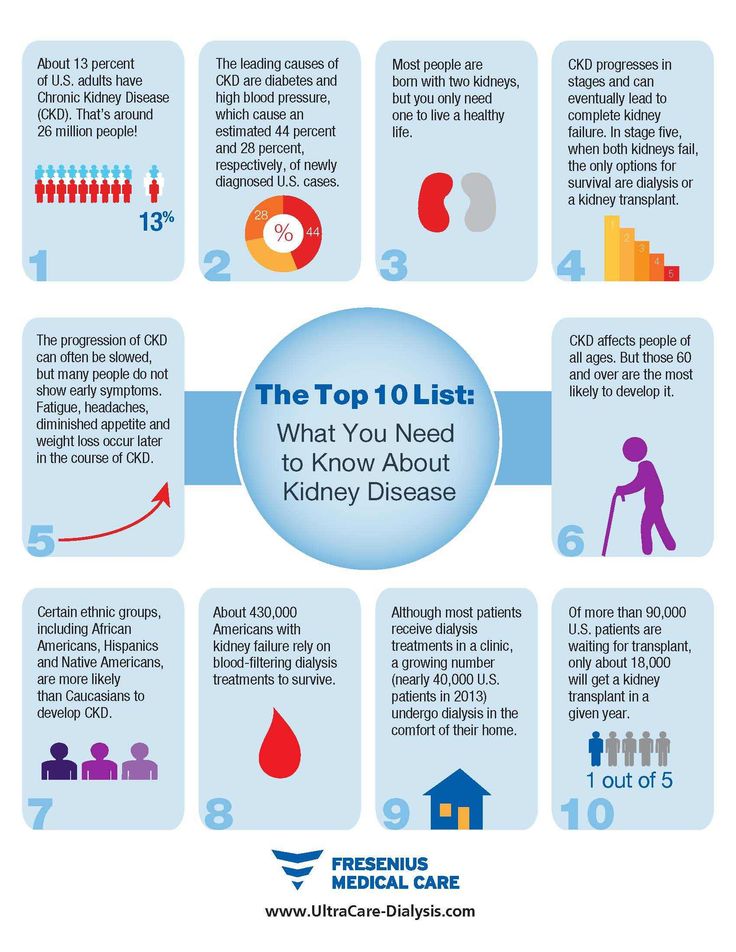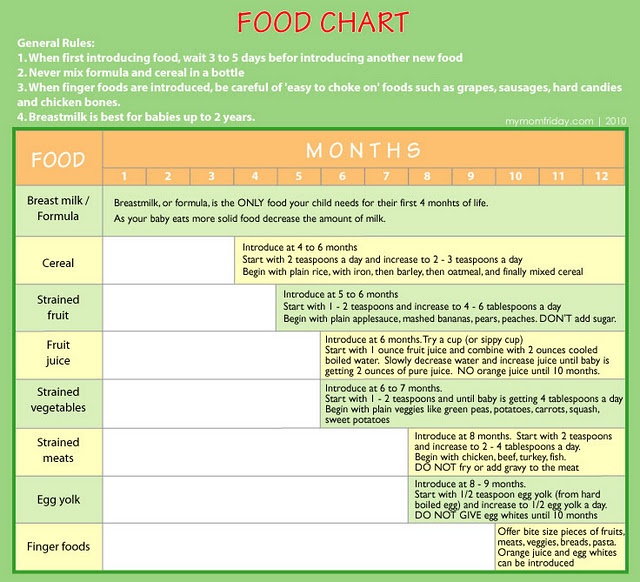Momtastic baby food chart
Introducing Solids- A Month by Month Schedule [Free Printable]
Erica Clark
It’s so exciting when your baby finally starts eating real food! But chew on this: now that your child is taking big bites, how do you know which fruits and vegetables to introduce to baby first, and how can you be sure they’re getting adequate nutrition? Introducing solids can be so confusing!
Advertisement
The best way to feed your baby is to make wholesome baby food at home. This way, you know precisely what your child is eating and you can create great baby food combinations for ultimate nutrition, devoid of artificial ingredients and preservatives.
Month by Month Food Schedule (For Breastfed and Formula Babies)4-6 Months
This month, introduce these nutrient-rich fruits to your baby:
- Bananas (mashed)
- Avocados (mashed)
- Apples (stewed and pureed)
- Pears (stewed and pureed)
This month introduce these nutrient-rich vegetables to your baby:
- Butternut Pumpkin (cooked and pureed)
- Sweet Potatoes (cooked and pureed)
- Green Beans (cooked and pureed)
Bananas and avocados may be served mashed and raw, but at this age, all other produce should be cooked for your baby. To cook produce: remove seeds/pits/skin, cut up fruits and veggies, place in a saucepan, cover with water, bring to boil, and cover and cook over low heat until tender.
7-8 Months
This month, introduce these nutrient-rich fruits to your baby:
- Avocados (mashed)
- Apricots (stewed and pureed)
- Apples (stewed and pureed)
- Bananas (mashed)
- Mangoes (stewed a pureed)
- Nectarines (stewed and pureed)
- Peaches (stewed and pureed)
- Pears (stewed and pureed)
- Plums (stewed and pureed)
- Prunes (stewed and pureed)
- Pumpkin (cooked and pureed)
This month introduce these nutrient-rich vegetables to your baby:
- Butternut Pumpkin (cooked and pureed)
- Sweet Potato (cooked and pureed)
- Carrots (cooked and pureed)
- Green Beans (cooked and pureed)
- Parsnips (cooked and pureed)
- Peas (cooked and pureed)
- Yellow Squash (cooked and pureed)
- Zucchini (cooked and pureed)
9-10 Months
This month, introduce these nutrient-rich fruits to your baby:
- Avocados (mashed)
- Apricots (stewed or very ripe and pureed)
- Apples (stewed or very ripe and pureed)
- Bananas (mashed)
- Blueberries (stewed or very ripe and pureed)
- Cantaloupe (very ripe and pureed)
- Mangoes (stewed or very ripe and pureed)
- Nectarines (stewed or very ripe and pureed)
- Peaches (stewed or very ripe and pureed)
- Pears (stewed or very ripe and pureed)
- Plums (stewed or very ripe and pureed)
- Prunes (stewed and pureed)
- Pumpkin (cooked and pureed)
This month introduce these nutrient-rich vegetables to Baby:
- Pumpkin (cooked and pureed)
- Artichokes (cooked and pureed)
- Asparagus (cooked and pureed)
- Broccoli (cooked and pureed)
- Carrots (cooked and pureed)
- Cauliflower (cooked and pureed)
- Eggplant (cooked and pureed)
- Fennel (cooked at pureed)
- Green Beans (cooked and pureed)
- Mushrooms (cooked and pureed)
- Parsnips (cooked and pureed)
- Peas (cooked and pureed)
- Capsicum (cooked and pureed)
- Squash (cooked and pureed)
- Sweet Potatoes (cooked and pureed)
- Zucchini (cooked and pureed)
Tip: At 9 months you can start feeding your baby some raw fruits, as long as they are very ripe and pureed. Be sure to introduce raw foods slowly to your child and watch closely for signs of allergies.
Be sure to introduce raw foods slowly to your child and watch closely for signs of allergies.
11-12 Months
This month, introduce these nutrient-rich fruits to your baby:
- Avocados (mashed)
- Apricots (stewed or very ripe and pureed)
- Apples (stewed or very ripe and pureed)
- Bananas (mashed)
- Blueberries (stewed or very ripe and pureed)
- Cantaloupe (very ripe and pureed)
- Grapefruit (crushed with a fork)
- Mangoes (stewed or very ripe and pureed)
- Nectarines (stewed or very ripe and pureed)
- Orange (crushed with a fork)
- Peaches (stewed or very ripe and pureed)
- Pears (stewed or very ripe and pureed)
- Plums (stewed or very ripe and pureed)
- Prunes (stewed and pureed)
- Pumpkin (cooked and pureed)
This month introduce these nutrient-rich vegetables to your baby:
- Butternut Pumpkin (cooked and pureed)
- Artichokes (cooked and pureed)
- Asparagus (cooked and pureed)
- Broccoli (cooked and pureed)
- Carrots (cooked and pureed)
- Cauliflower (cooked and pureed)
- Corn (cooked and pureed)
- Cucumber (pureed)
- Eggplant (cooked and pureed)
- Fennel (cooked at pureed)
- Green Beans (cooked and pureed)
- Mushrooms (cooked and pureed)
- Parsnips (cooked and pureed)
- Peas (cooked and pureed)
- Capsicum (cooked and pureed)
- Spinach (cooked and pureed)
- Squash (cooked and pureed)
- Sweet Potatoes (cooked and pureed)
- Zucchini (cooked and pureed)
Tip: Some doctors may warn about introducing citrus to babies under one year, but certain studies released after 2008 have led experts to state that there is no need to delay foods that are typically allergenic, but this does not apply to babies who have no known allergies or sensitivities. As with any other food, when introducing citrus, be sure to be vigilant and watch closely for negative reactions or sensitivities.
As with any other food, when introducing citrus, be sure to be vigilant and watch closely for negative reactions or sensitivities.
If your baby is prone to food sensitivities, wait to introduce citrus until after his first birthday.
More tips for feeding your baby:
- 5 Reasons Why I Loved Bottle Feeding My Baby
- 21 Things Only Mums Who Breastfeed Know
- 5 Simple & Healthy Pasta Salads for Baby-Led Weaning
Image: Getty
Save
Tags: Fruit, Homemade Baby Food, starting-solids, stonyfield, Vegetables
Share this article on facebookSHARE Share this article on twitterTWEETMonitoring String
monitoring_string = "b24acb040fb2d2813c89008839b3fd6a"monitoring_string = "886fac40cab09d6eb355eb6d60349d3c"
GA tracking with Tynt
Dr Linda's tips for preparing homemade baby food
Dr Linda, what tips do you have for preparing homemade baby food to preserve their nutritional value?”
Here is a list of the best and healthiest ways to cook and foods as you are preparing homemade baby food. It is best to use moderate(not high) temperatures when preparing homemade baby food because cooking foods at very high temperatures( like frying and grilling) can cause the formation of toxic chemicals that are not good for your baby(or for you either!).
It is best to use moderate(not high) temperatures when preparing homemade baby food because cooking foods at very high temperatures( like frying and grilling) can cause the formation of toxic chemicals that are not good for your baby(or for you either!).
The healthiest ways to cook baby foods are:
- Steaming
- Baking at lower temperatures.
- Cooking them in a pressure cooker.
- Braising them in small amounts of fluid.
- Poaching
Preparing homemade baby foods:
Meats:
Handling meat, poultry and fish:
Make sure you store the meat in the coldest part of the refrigerator.
Use separate cutting boards and utensils for meats than other produce.
Remove the skin, bones and tough parts of the meat before you cook any meat so you do not have to handle it and risk contaminating ti with bacteria after you have cooked it.
Make sure you cook the meat completely through. Do not give babies undercooked meat, poultry or fish.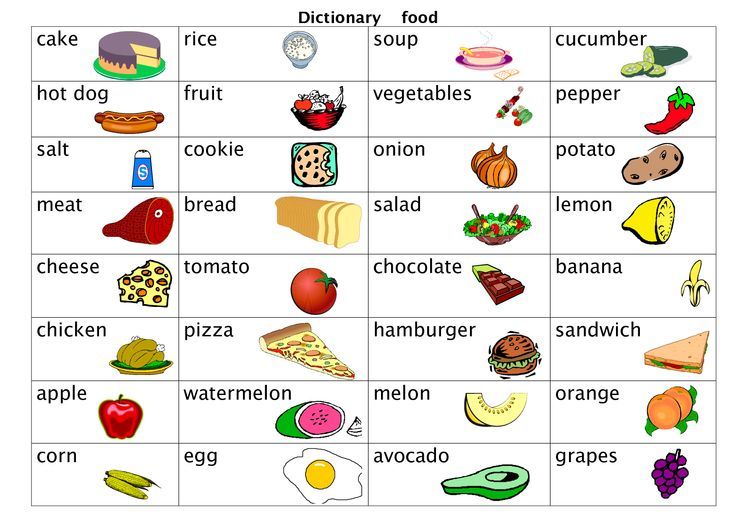 Meat, poultry and fish that are not completely cooked may contain bacteria, viruses or parasites that can be dangerous to your baby.
Meat, poultry and fish that are not completely cooked may contain bacteria, viruses or parasites that can be dangerous to your baby.
Cook red meats to an internal temperature of 160F(71C), white meat poultry to 165F(74C), dark meat poultry to 180F(82C) and fish to 145F(63C).
After the meat is cooked, allow it to cool for 10-15 minutes and then grind it up to the proper consistency . It is much easier to grind meat when it is warm. You may use the broth you cooked it in to thin it out. Using breastmilk or formula to thin it out may cause funny consistency issues when you warm it back up later, especially if you have frozen it.
Take out the portion you are going to feed your baby, then store the rest as soon as possible.
You can store the meat for 24 hours maximum in the refrigerator.
Freeze the portion of meat you are planning to freeze as soon as possible after you prepare it to lower the risk of bacteria growing in it.
You can freeze it in ice cube trays that you have washed thoroughly or use the cookie sheet method, where you put the food in 1-2 tablespoon portions flat out on a on a very clean cookie sheet. Cover the portions you are preparing as homemade baby food and place in the freezer.
Cover the portions you are preparing as homemade baby food and place in the freezer.
When the cubes or flat portions have frozen solid, take them out and put them in an airtight container which you label with the name of the food, as well as the date you froze it, so you know later if it is still safe to use.
You can safely store frozen meats for up to 3 months.
Fruits and vegetables as homemade baby food:
When preparing homemade baby foods from vegetables and fruits here are a few things you need to consider.
“Dr. Linda, can my baby eat raw fruits?”
It depends on your baby’s age and on your baby’s digestion.
If your baby is less than 6 months old, you might want to cook fruits (except bananas and avocado). Her tummy may not be able to digest the uncooked fruit.
If your baby is 8 months old and above, no need to cook the fruit.
If your baby is 6-8 months old, try raw fruit and see what happens. if she gets gassy or fussy, try cooking the produce and see if she tolerates it better.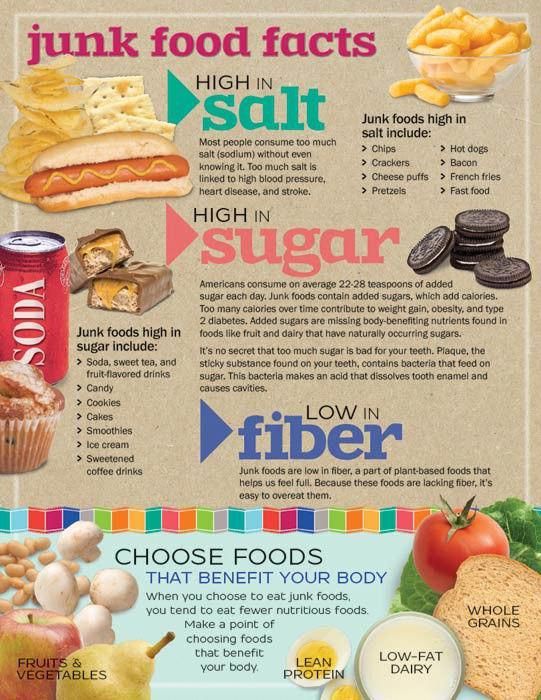 Then try the produce raw again in a few weeks and see how she does.
Then try the produce raw again in a few weeks and see how she does.
“Dr. Linda, should I peel the fruit or vegetable?”
Whether to peel the skin off or not depends on how old your baby is and how she tolerates the skins. Vegetable and fruit skins are full of fiber which is good to make bowel movements soft and easy to pass, but may be hard for younger( less than 8 months) babies to tolerate and they may get gassy and uncomfortable.
In general, I would use the same rule for peeling as I would use for cooking fruits and vegetables. See above.
Whether you If you keep the skin on make sure that there are no pieces in the puree that are choking hazards for your baby.
Preparing homemade baby food from produce:
As always make sure your hands are very clean.
Make sure the surfaces you are working on are very clean and have not been used for preparing raw meats.
Make sure you use clean utensils and cutting boards.
Get separate cutting boards for fruits and vegetables and others for raw meats.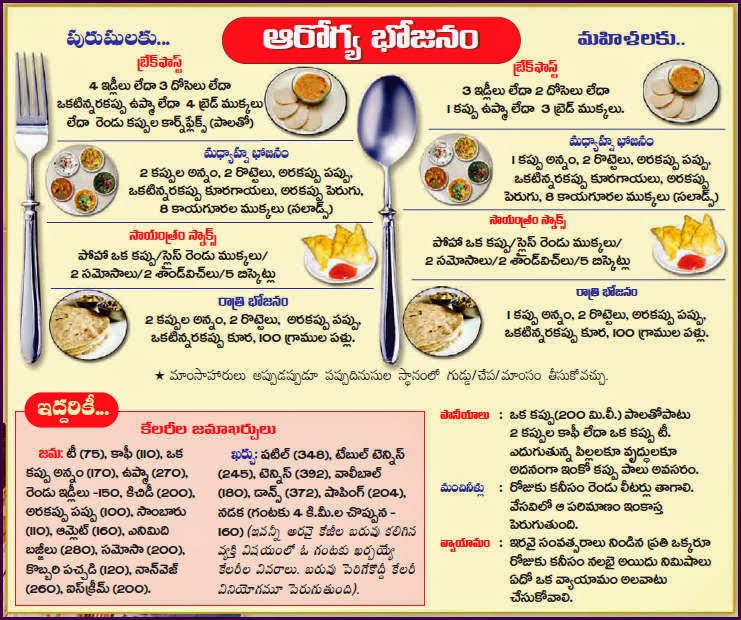
Do not store or put uncooked meat anywhere near raw produce or baby food.
Always wash your fruits and vegetables thoroughly in clean water, scrub their surfaces with a brush if they have a peel and then dry them off with paper towels. Do this even if you are going to peel the produce. Washing decreases the number of bacteria on the skin and, lowers the risk of food poisoning. Once the produce is ready (cooked or raw )cut up, use a food processor to grind it up to the proper consistency . Do not leave the cooked food out of the refrigerator longer than 1-2 hours maximum.
If you want, you can freeze the produce (as in meats) or, even better, make a small amount fresh every 2 days and feed them to your baby fresh.
It is safe to keep produce purees up to 48 hours in the refrigerator as long as you cleaned them very well before preparing them.
“Dr. Linda, can I add spices while preparing homemade baby food?”
Here is a list of things you do not want to add to your homemade baby foods because they are not healthy for your baby:
- Salt
- Sugar and artificial sweeteners.

- Honey (till baby is 12 months old).
- Excessively hot spices, as they may burn your baby’s mouth.
Here are some general rules about using spices:
When you are introducing a food for the first time, don’t add spices until you know your baby is tolerating the food alone.
Second foods are when you are mixing together foods that you have already given your baby with no problems. Adding spices to foods not only makes them taste better, but also makes your baby and child a more adventurous eater in the long run. I added cinnamon, garlic, onions and ginger ( one at a time) to my son’s homemade baby food from the time he was 7 months old and he has always been a very adventurous eater.
“Dr. Linda, can I safely give my baby eggs?
Try to get organically raised eggs if possible.
To lower the chances of bacteria growing in the eggs:
- Put the eggs in the fridge as soon as you get them home to lower the chances of bacteria like Salmonella growing in them.

- Make sure to store the eggs in the main part of the fridge as it is colder than the door part.
- Make sure that you cook the egg till both the white and the yellow is hard. Salmonella is a bacteria found in eggs that can give baby food poisoning.
- Serve your baby the egg immediately or put the egg in the fridge to keep till later.
- Throw out any cooked eggs left out of the fridge for more than two hours.
If you have a family history of egg allergy or your child has eczema, consult with your doctor before offering you baby egg whites.
If not, then make sure that you only give a very small amount of egg white the first time you give it to make sure baby does not have a reaction (see next week’s blog).
“Dr Linda, how do I reheat frozen baby food?”
Always make sure to reheat baby food to a temperature of 165F(74C). Stir it well and check its temperature before giving it to your baby.
Do not defrost baby food by leaving it at room temperature or in a water bath, it will grow too many bacteria to be safe. Instead let it defrost in the refrigerator, put the closed container under cool running water, or let it defrost while you are reheating it.
Instead let it defrost in the refrigerator, put the closed container under cool running water, or let it defrost while you are reheating it.
Do not rewarm food in plastic containers. Even BPA-free plastic may have chemicals toxic to your baby. Instead use glass containers or stainless steel pots and make sure to heat to a temperature of 165F(74C).
After you thaw the food use it immediately.
If there are any leftovers in your baby’s dish, throw them out.
If there is some thawed food left over that you did not offer your baby, put it in the fridge and use within 24 hours if it is meat and within 48 hours if it is something else.
I would love to hear your comments and your adventures in preparing homemade baby food. Also, please visit my website AskDrLinda.com and sign up for my monthly newsletter.
To your Holistic Health,
Dr Linda .
Resources:
http://wholesomebabyfood.momtastic.com/veggiefruit.htm
https://www.fda.gov/Food/FoodborneIllnessContaminants/BuyStoreServeSafeFood/ucm114299. htm#prep
htm#prep
https://www.ncbi.nlm.nih.gov/pmc/articles/PMC4247335/http://pediatrics.aappublications.org/content/130/6/e1757
http://wholesomebabyfood.momtastic.com/baby-food-freezing-chart.htm
https://www.uptodate.com/contents/starting-solid-foods-during-infancy-beyond-the-basics?source=search_result&search=baby%20food&selectedTitle=2~150#h21
http://www.foodsafetynews.com/2011/02/making-homemade-baby-food-safe/#.WPi9nlPyvow
How to prepare and store baby food
Making homemade baby food is not only fun, but also very easy. You will be surprised to see that the puree actually takes less time than you thought. Also, after cooking, you should know how to properly store the product. We learned more about this topic at Wholesomebabyfood.momtastic, and we share the information with you.
Material content
©wholesomebabyfood.momtastic
Start by steaming fruits/vegetables, or roast in the oven or simply boil. Steaming maintains most of the nutrients.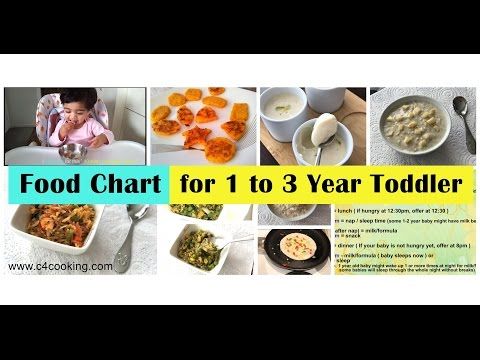 Steaming, baking and boiling allow you to produce large batches of food at the same time. Take vegetables or fruits and put them in a blender. Pour out the liquid in which the vegetables/fruits were cooked. This will be the liquid you add to the puree.
Steaming, baking and boiling allow you to produce large batches of food at the same time. Take vegetables or fruits and put them in a blender. Pour out the liquid in which the vegetables/fruits were cooked. This will be the liquid you add to the puree.
It also helps retain any nutrients that may have entered the water during cooking. You can thin the puree with breast milk or plain water. Mix the products in a blender until a homogeneous texture is formed. Add liquid and continue beating. By the way, for some vegetables, such as carrots, you should not use the water (in which it was boiled) to thin the puree.
Now it's time to prepare the puree for freezing. Divide puree into small containers, fill and halfway. By the way, you can add liquid even after freezing, just before serving. More on freezing below.
©wholesomebabyfood.momtastic Never freeze homemade baby food in glass containers that are not specifically labeled "freeze-safe". For example, old jars are not meant to be frozen. Having received liquid puree, you can spread them into ice-freezing trays. Fill each cube with puree as if you were filling a tray with water for making ice cubes.
Having received liquid puree, you can spread them into ice-freezing trays. Fill each cube with puree as if you were filling a tray with water for making ice cubes.
Cover the tray with plastic wrap and place it in the freezer. Once the puree cubes are set and frozen, remove the trays from the freezer and transfer the puree to freezer bags. Each cube is approximately 30 ml. Be sure to label the bag with the cooking date as well as the type of food. Baby food cubes should be used within a month of freezing. When it's time to feed your baby, simply take out the required amount of food and defrost and then reheat.
©wholesomebabyfood.momtasticFresh homemade baby food puree is recommended to be stored for no more than 48 hours. This time limit ensures that the chance of bacterial growth in the puree is minimized and that the food does not take on a "refrigerator taste". This "rule" applies to vegetables, fruits, meat.
If you do not plan to freeze homemade baby food, puree every day or every other day. For example, one sweet potato can be baked and then you can freeze one half without mashing it and puree the other half later. This method will help reduce "waste" and also help ensure food safety.
For example, one sweet potato can be baked and then you can freeze one half without mashing it and puree the other half later. This method will help reduce "waste" and also help ensure food safety.
Experts say it takes a baby 15 to 21 times to taste a food before a true like or dislike is established. If you are just starting to introduce solid foods, you really will not be able to determine how the baby relates to this or that food. This happens much later.
Freezing the puree allows you to go back and try giving your baby the “rejected” food again. Even if you strictly adhere to the 3-4 day waiting rule. Freeze baby food anyway for optimal food safety.
©wholesomebabyfood.momtastic Refrigerate or freeze perishable foods within two hours of purchase or preparation. If the room temperature is above 32 degrees, refrigerate perishable food for one hour. Freeze minced meat, poultry, fish, and shellfish if you don't plan on eating them within two days. Beef, veal, lamb or pork should be frozen within three to five days.
Beef, veal, lamb or pork should be frozen within three to five days.
You can put your prepared food in the refrigerator and then pack it in the freezer within 2-3 hours. It is safe to leave cooked food in the refrigerator for up to 48 hours
Salt and sugar are never needed when preparing baby food. Omit these foods, preferably whenever your child is eating. Other spices such as cinnamon, garlic powder, pepper can be introduced as early as 7 months after consulting a pediatrician. Remember, always check with your pediatrician about introducing solid foods to your baby. Discuss especially any foods that may pose an allergy risk to your baby.
organization and control, examples of menus and a table with products according to SanPiN
Vika Vishnyakova
nutritionist
Author profile
Ekaterina Tabatchikova
collected data
Author profile
I am a nutritionist — I help people build a balanced diet and healthy relationships.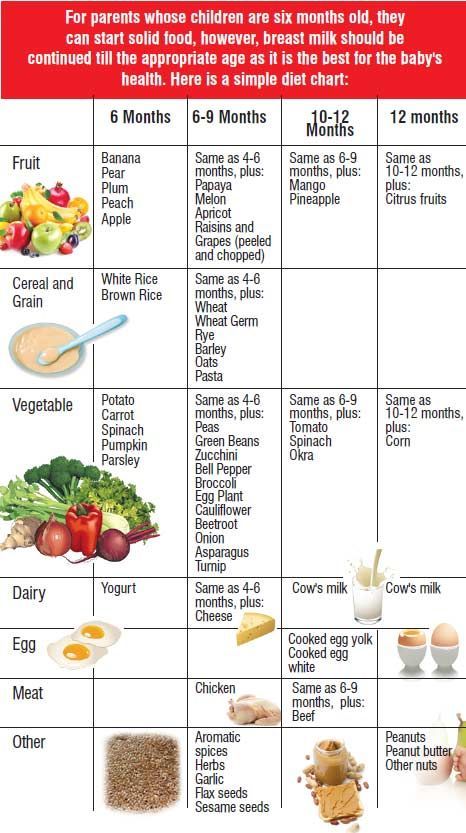
I work not only with adults, but also with children. For example, I am compiling menus for private kindergartens that are focused on an evidence-based approach to health.
The menu in the kindergarten must comply with the sanitary and epidemiological standards for children's institutions and the methodological recommendations of Rospotrebnadzor. These norms should support the health of children - future adults.
But in practice, Russian nutritional standards are very different from global recommendations: children are offered too many calories and few nutrients.
I will tell you what is wrong with the food in Russian kindergartens and how it can be corrected.
Kindergarten feeding problems
- Too many calories
- Too many free sugars
- Too much salt
- Substitution of fruit for juices and unknown amount of fiber
- Too few vegetables
- Too many ultra-processed foods
- Too little vegetable protein
- Too little fish If the garden prepares food on its own, it will have to fulfill all the requirements for catering: premises, equipment, raw materials.
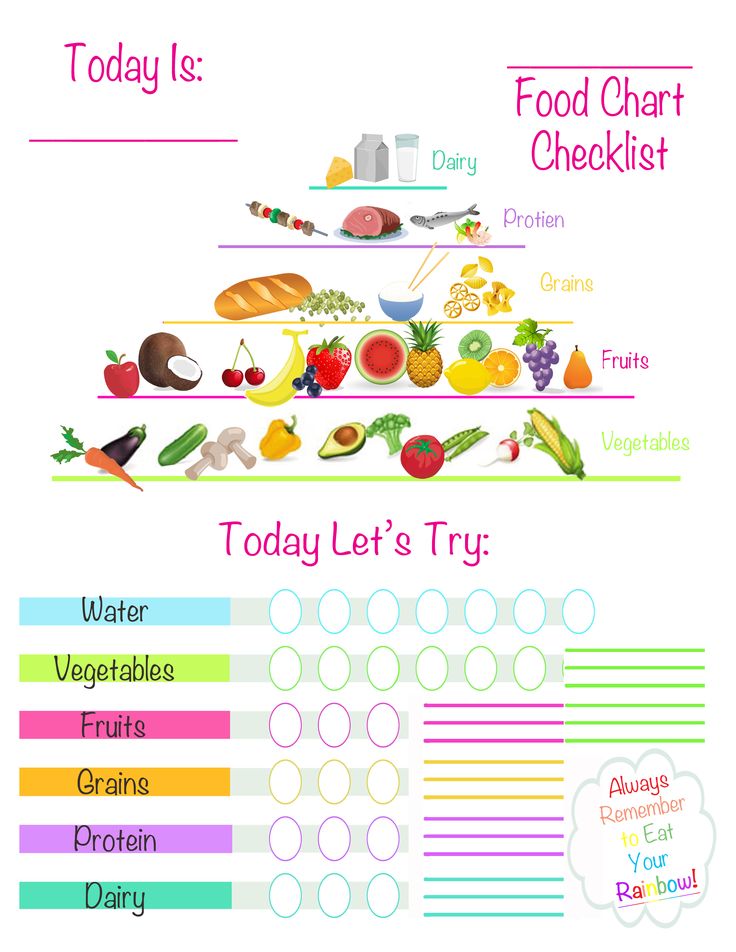 For example, the kitchen should include seven rooms. Not every kindergarten has such opportunities.
For example, the kitchen should include seven rooms. Not every kindergarten has such opportunities. SP 2.4.3648-20 - sanitary requirements for organizations of education and training, recreation and rehabilitation of children and youthPDF, 4.3 MB
, cut, stack and eat. In this case, the number and area of premises are tied to the number of children: there should be at least 0.7 m2 per person.
No matter how the kindergarten gets food, the menu must comply with certain rules. These rules are set not by the kindergarten or the city administration, but by Rospotrebnadzor and the sanitary doctor of Russia - it was they who prepared the documents that underlie menu planning in kindergartens in Russia:
- Guidelines for rational nutrition.
- Sanitary and epidemiological norms for the nutrition of children in preschool and school institutions.
Guidelines for rational nutrition explain how many calories, proteins, fats, carbohydrates, vitamins and minerals a Russian should receive depending on gender, age and type of work - mental or physical.
 These recommendations were developed by the Research Institute of Nutrition of the Russian Academy of Medical Sciences, and approved by Rospotrebnadzor in 2021.
These recommendations were developed by the Research Institute of Nutrition of the Russian Academy of Medical Sciences, and approved by Rospotrebnadzor in 2021. The recommendations generally do not contradict global practice. For example, the share of animal proteins should be 65%, which is slightly more than recommended in other countries. The number of vegetables and fruits in our menu is also close to global norms, the values for sugar and calories are approximately the same.
The new version of the sanitary and epidemiological norms for children's nutrition, or sanpin for short, came into force in January 2021 and will be valid for at least six years. In this document, the chief sanitary doctor of Russia explains how the menu should look and what the products should be, as well as how to store them. For example, chilled meat and vegetables should not be stored on the same shelf in the refrigerator, and drinking water in a jug should be changed every three hours, even if the children have not drunk everything.
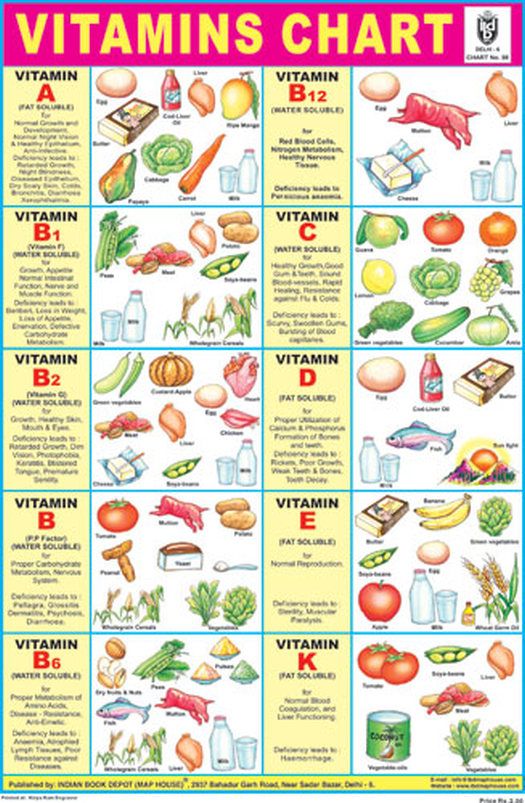
Norms of nutrition in kindergarten according to SanPin
Products 1-3 years 3-7 years Milk 390 g per day 450 g per day Greens, vegetables, salted and pickled not more than 10% of the total number of vegetables 180 g per day 220 g per day Potato 120 g per day 140 g per day Fruit and vegetable juices 100 g per day 100 g per day Fresh fruit 95 g per day 100 g per day Wheat bread 60 g per day 80 g per day Meat 50 g per day 55 g per day Rye bread 40 g per day 50 g per day Fish fillet 32 g per day 37 g per day Cereals, legumes 30 g per day 43 g per day Sugar, including in foods and drinks 25 g per day 30 g per day Offal: liver, tongue, heart 20 g per day 25 g per day Poultry: chicken, broiler chicken, turkey 20 g per day 24 a day Butter 18 g per day 21 g per day Confectionery 12 g per day 20 g per day Vegetable oil 9 g per day 11 g per day Dried fruits 9 g per day 11 g per day Pasta 8 g per day 12 g per day Food grade iodized salt 3 g per day 5 g per day Starch 2 g per day 3 g per day Coffee drink 1 g per day 1.  2 g per day
2 g per day Tea 0.5 g per day 0.6 g per day Cocoa powder 0.5 g per day 0.6 g per day Baker's yeast 0.4 g per day 0.5 g per day Vitamin drinks 0 50 g per day Egg 1 piece 1 piece milk
1-3 year
390 g per day
3-7 years
450 g per day
Greens, vegetables, salty and sauer no more than 10%of the total vegetables
1-3 year
180 g
3-7 years old
220 g per day
Potatoes
1-3 year
120 g per day
3-7 years
140 g per day
Fruit and vegetable juices
1-3 year
100 g per day
3-7 years old
100 g per day
Fresh fruits
1-3 years old
95 g per day
3-7 years
100 g per day
Wheat bread
1-3 year
60 g per day
3-7 years
80 g per day
1-3 years
50 g a day
3 -7 years
55 g per day
rye bread
1-3 year
40 g per day
3-7 years old
50 g per day
Files
1-3 1-3 1-3 1-3 years
32 years per day
3-7 years
37 years per day
cereals, legumes
1-3 year
30 g per day
3-7 years old
43 g per day
sugar, including in dishes and drinks
1-3 years old 1-3 years old
25 g per day
3-7 years old
30 g per day
Incrudes: liver, heart, heart
1-3 year
20 g per day
3-7 years
25 25 g per day
Poultry: chicken, broiler chicken, turkey
1-3 years old
20 g per day
3-7 years old
24 g per day
butter
1-3 year
18 g per day
3-7 years old
21 g per day
Confectionery
1-3 year
12 g per day
3-7 years old
20 g per day
Dry-fruits
1-3 year
9 g per day
3-7 years
11 years per day
Plant oil
1-3 year
9 g per day
3-7 years old
11 g per day
Macaron products
1-3 years
8 g per day
3-7 years old
12 g per day
Driving sodium iodized salt
1-3 year
3 g per day
3-7 years old
5 g per day
starch 9000
1 -3 years
9Olive1-3 years old
0.
 5 g per day
5 g per day 3-7 years old
0.6 g per day
Cocoa Power
1-3 years old
0.5 g per day
3-7 years
0.6 g per day
Baker's yeast
1-3 years
0.4 g per day
3-7 years old
0.5 g per day
Vitaminized drinks
1-3 year
3-7 years old
50 g per day
1- 1- 3 years old
1 piece
3-7 years old
1 piece
Sanpin has special requirements for the daily nutrition of orphans. They need to be given more vegetables - 300 instead of 220 g, fruits - 260 instead of 100 g. But the volume of unhealthy foods is also increasing. For example, the daily intake of sugar reaches 55 g, while children aged 3-7 years without orphan status receive 30 g.
Average daily sets of food products for feeding children in organizations for orphans and children left without parental care persons. Rospotrebnadzor checks how the rules are observed in the kitchen: after a complaint from the parents or according to the schedule - once every three years.

Art. 6.6 of the Code of Administrative Offenses of the Russian Federation
But there are also requirements in this sanpin that will not be able to somehow improve the health of children, but rather, on the contrary, in the long term can lead to the development of cardiovascular diseases, diabetes and obesity. This is especially true of an excess of sugar, calories and a simultaneous lack of fiber and unsaturated fats.
How people die in Russia
Some points of our sanpin are at odds with the recommendations of international associations involved in child health: the World Health Organization, the United Nations Children's Fund, the European Society of Gastroenterology, hepatologists and food industry specialists, the US National Institutes of Health and the UK Department of Health.
Early childhood feeding - WHO guidelines
Children, food and nutrition - UN Children's Fund summary
Dietary guidelines:
USA,
Canada,
UKTo show differences in children's nutrition, we compared Sanpin's recommendations with other countries' practices and WHO recommendations.
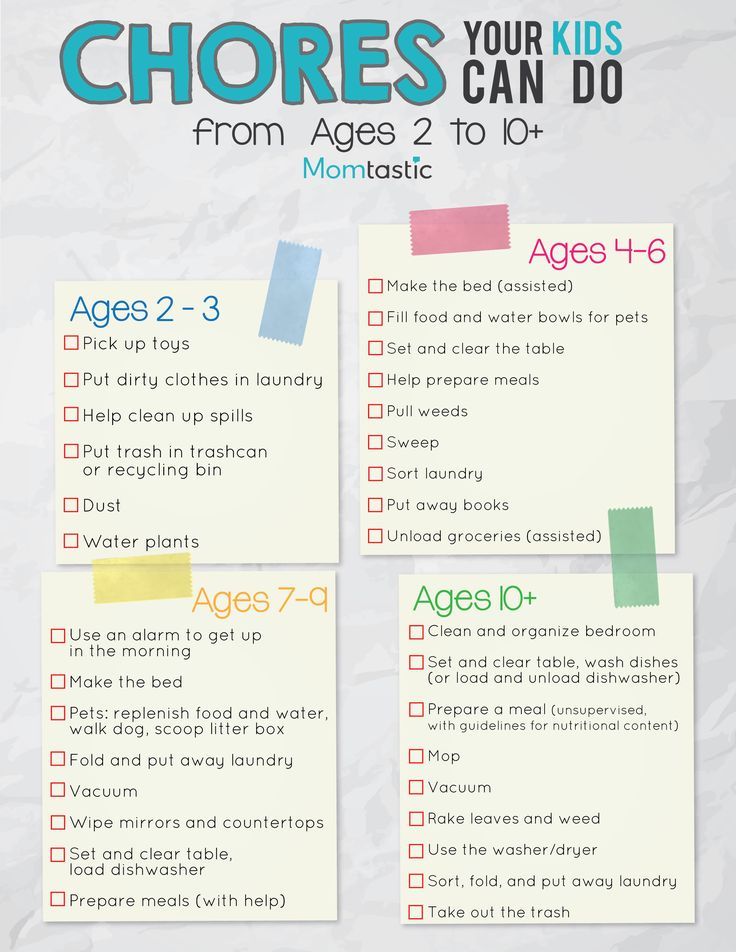 To do this, we studied 10 daily menus in randomly selected kindergartens in major Russian cities: two Mondays, two Tuesdays, and so on. To correctly estimate the amount of fish, we took the menu of two Thursdays - "fish" days.
To do this, we studied 10 daily menus in randomly selected kindergartens in major Russian cities: two Mondays, two Tuesdays, and so on. To correctly estimate the amount of fish, we took the menu of two Thursdays - "fish" days. Here are the menus, you can also study them:
- Monday and Tuesday at Kindergarten No. 102 in Novosibirsk.
- Wednesday and Friday at Kindergarten No. 39 in Kazan.
- Thursday and Friday in kindergartens in St. Petersburg.
- Tuesday and Wednesday at Kindergarten No. 99 in Yekaterinburg.
- Monday and Thursday in Moscow kindergartens.
So, here are the problems on the menu in Russian kindergartens.
On the website of the educational institution, you can see the menu for kindergartens, nurseries and schools. It is standardized for everyone, so most often in the state gardens of Moscow the menu will be the same or with minimal discrepanciesToo many calories
Sanpin recommends that children aged 3-7 years consume 1800 kcal per day.
The menu of one Moscow kindergarten: the total nutritional value of dishes is 1919 kcal. Sometimes more than
WHO recommends that girls 4-6 years old consume 1545 kcal per day, boys - 1715 kcal. The average value for preschoolers regardless of gender will be 1630 kcal.
Sanitary and epidemiological requirements for public catering. Annex 10, table 1
Here are the norms in other countries:
- USA: 1200-1600 kcal/day. At the same time, the calorie content of the diet is tied to physical activity, and the largest number of calories - 1600 - is necessary for boys whose daily physical activity is more than 60 minutes a day. Other children need fewer calories.
- UK: 1378 kcal/day for girls aged 4-6 and 1482 kcal/day for boys of the same age. The average caloric content of the diet for children of both sexes will be 1430 kcal per day.
- Estonia: 1200-1810 kcal/day. The maximum is in seven-year-old boys with high physical activity, the minimum is in four-year-old girls with low activity.

- In Canada, daily calorie intake is tied to age, height and weight. For example, a three-year-old child needs 1500 kcal/day.
It is worth considering that Western recommendations indicate calorie rates for the whole day. But children eat not only in the garden, so the Russian 1800 kcal just for the time in the kindergarten can be too much for a preschooler. Perhaps such a high calorie content of dishes in sanpin is due to the fact that not all children willingly eat in kindergarten: many leave half a portion or even more on the plate. Nevertheless, every third Russian child under the age of 13 is overweight - and this figure is growing every year.
Too many free sugars
According to SanPin, a kindergartener can eat from 30 g of sugar per day. But the European Community of Child Nutrition Specialists recommends eating only up to 20 years
At the same time, in fact, the daily menu in kindergartens contains more sugar. For example, on Tuesdays in a kindergarten in Kazan, children receive 40 g of sugar - we could easily calculate this because the administration indicated the amount of sugar in the daily menu.

In gardens where the total amount of sugar in the menu per day is not indicated, we counted it according to recipes for cooks - technological cards. In Russia, meals that catering establishments can prepare for children are listed in approved collections. Cooking other dishes or deviating from approved recipes is prohibited.
/eda-uchebnik/
Course on PP
Therefore, if we want to know exactly what recipe is used to prepare semolina porridge or how much sugar, semolina and milk are put in it, we can look at this information in the collection of recipes. For ten selected orchards, we got an average figure of 67 g of sugar per day.
This does not contradict sanpin, since the rules do not indicate the upper limit of sugar, but the minimum.
Some gardens show how much sugar is in each dish Others indicate the number of the flow chart, from which we can find out the recipe and ingredients of the dishIt turns out that every day children eat 3.
 5 times the safe amount of sugar. The main sources of free sugars in the diet of children in kindergartens are compotes, teas and fortified drinks.
5 times the safe amount of sugar. The main sources of free sugars in the diet of children in kindergartens are compotes, teas and fortified drinks. There are special rules for orphans: about 40% more sugar is added to their excessive sugar intake, and instead of 30 g, children receive at least 55 g of sugar per day.
Too much salt
The current Russian norm is 5 g of salt per day for children 5-7 years old. For adults, the figure is the same.
However, WHO recommends salt reduction for children based on their energy needs compared to adults. For example, if an adult consumes on average 3,000 kcal per day, and a preschooler consumes 1,630 kcal, then the child should receive 2.7 g of salt per day. This means that the norms of salt consumption in sanpin are almost twice as high as compared to the WHO recommendations.
In fact, it is almost impossible to calculate how much salt a child in kindergarten eats per day: manufacturers in Russia are not required to indicate how much salt is contained in 100 g of a product.

Replacing fruits with juices and an unknown amount of fiber
Sanpin allows you to replace some products with others: for example, instead of beef, give children beef liver, instead of drinking milk - condensed with sugar, and replace fresh fruits with juice. Substitutions are formulated with nutritional value, i.e. calories. The amount of fiber, vitamins and minerals does not seem to matter.
Sanitary and epidemiological requirements for public catering. Appendix 11
On the menu in kindergartens, we see that children receive fresh fruit once a day - for second breakfast. Usually it is a pear, an apple or an orange: each kindergartener will eat 80-100 g. If the kitchen decides to replace the fruit with juice, then the portion will be larger: 106-133 g of juice.
But this substitution of fruit for juice reduces fiber intake and increases the already high content of free sugars in the children's menu.
Fiber is an indigestible component of foods, an important food source for microorganisms in the human intestine.
 It reduces the risk of developing non-communicable diseases and death from them. Adults recommend 25-29g fiber per day. Children need less: children over 3 years old - 10-20 g of fiber per day according to the standards of Rospotrebnadzor and 15-20 g according to the standards of the UK Ministry of Health.
It reduces the risk of developing non-communicable diseases and death from them. Adults recommend 25-29g fiber per day. Children need less: children over 3 years old - 10-20 g of fiber per day according to the standards of Rospotrebnadzor and 15-20 g according to the standards of the UK Ministry of Health. We do not know if this norm is maintained in kindergartens: the menu parameters include calories, proteins, fats and total carbohydrates, but how much fiber is there, we can only guess.
Although fiber is classified as a carbohydrate, it is not possible to talk about its amount based on the total amount of carbohydrates in the product. For example, 30 grams of carbs could be in one banana, two carrots, or one Twix bar. At the same time, there will be almost no fiber in chocolate, but there will be 18 g of sugar, and in banana and carrot - 0 free sugars and 5.4 g of fiber.
Too few vegetables
For children under 7 years old, Sanpin recommends eating 220 g of vegetables and 140 g of potatoes per day.
 This is in line with world practice, but there is a problem: in fact, this norm is not observed in kindergartens.
This is in line with world practice, but there is a problem: in fact, this norm is not observed in kindergartens. We compared 10 menus, and judging by them, on average, children receive about 190 g of vegetables and 93 g of potatoes - this is 21% less than the required amount.
This is the menu in a kindergarten in Novosibirsk. Children will receive 50 g of salad vegetables and 88 g of borscht. Only 138 instead of 220. Potatoes are found only in borscht - a maximum of 132 g, depending on the season. This is close to the requirements of sanpin. We counted the number of vegetables thanks to the technological mapLots of ultra-processed foods
This category includes processed meats - sausages and sausages - and other highly processed products: baked goods, confectionery, sugary drinks. According to Russian standards, children should not be given raw smoked sausage, and boiled sausage can only be included in the menu in orphanages: a pupil of 3-7 years old will receive 10 g of sausage per day.

Classification of products according to the degree of processing
Study on the association of frequent consumption of fast food and obesity in children
Scientific review on the impact of fast food on children's health
Study on the relationship of fast food in the diet of children and impaired lipid metabolism
Study on the relationship of regular consumption of fast food and an increased risk of premature death
pastries, bread, fruit juices. These foods are high in calories but low in nutrients.
Studies show that children who regularly consume 30-50% of their calories from ultra-processed foods are more likely to develop lipid disorders and obesity. Studies in adults show that people who get more than 15% of their total calories from ultra-processed foods have a 58% higher risk of dying from cardiovascular disease.
In a typical kindergarten day menu, more than 21% of calories are presented in the form of products with high calorie content but low nutritional value: juices, compotes and tea with sugar, pastries, jams and bread made from premium flour.
This is the menu in the Moscow garden. Your child will get 2,659 calories per day, of which 36% comes from ultra-processed foods
These diets can increase the risk of obesity, cardiovascular disease, and cancer. In addition, ultra-processed foods can crowd out other foods from the diet: children are more likely to eat sweet cereals, white bread and pastries than vegetables, fruits, fish and legumes.
Too little vegetable protein
Rospotrebnadzor recommends consuming 35 g of vegetable protein per day. Such protein is found mainly in legumes and nuts, and there are very few of them in the current menu in kindergartens or not at all. Deficiencies in these food groups lead to deficiencies in fiber and unsaturated fatty acids, the main components of dietary prevention of cardiovascular disease and cancer.
Of the 10 menus examined, none contained nuts. Children get vegetable protein mainly from buckwheat porridge, green peas and some bread.
An example of a daily menu in a kindergarten in Novosibirsk, which contains 21 g of vegetable protein A is a daily menu in a kindergarten in Yekaterinburg: vegetable protein is found in bread and carrot salad. Total 9.3 g
Total 9.3 g Too little fish
The American Academy of Pediatrics and the UK Department of Health recommend eating two servings of fish per week, with one serving containing a fatty type of fish such as mackerel or salmon. For children, this amount of fish is about 60 g per week.
American Academy of Pediatrics Guidelines for Fish in Children's Diet
UK Department of Health guidelines
Current regulations recommend giving Russian preschoolers 37 grams of fish per day, including light or lightly salted. This is an adequate amount, however, in practice, fish is often replaced with meat or dairy products. So you can: in the table of substitutions in sanpin it is indicated that instead of 100 g of cod, you can offer the child 87 g of beef or 105 g of cottage cheese.
But in this case, the norm of fish is not maintained. And fish and seafood is the only guaranteed source of omega-3 unsaturated fatty acids in the diet. The ones that are associated with a reduced risk of cardiovascular disease.

Of the 10 kindergarten menus we studied, fish dishes were only in half. If we calculate the average weight of fish dishes, we get 57 g - it looks like a normal amount. But in fact, the weight of a portion does not consist only of the weight of the fish. For example, potatoes, carrots and butter are put in pollock ear. Most likely, children receive about 30-40 g of pure fish per week - this is two times lower than the norm.
There is one fish dish on the daily menu - fish soup. It seems that the weight is not bad - as much as 200 g. But if you look at the technological map, it becomes clear that the child will receive 32 g of canned fishWhy is this a problem
Such a menu will not harm the child for a day, a week, or two. But over a few years, unhealthy eating habits can form.
A child who is accustomed to breakfast with semolina, a loaf and tea with sugar, with a high degree of probability, grows into an adult for whom such a breakfast is the norm.
Regular nutritional imbalance is a risk factor for obesity, diabetes, cardiovascular disease and cancer.
 It turns out that by instilling unhealthy eating habits in children, we are raising them into adults with the risk of developing fatal diseases.
It turns out that by instilling unhealthy eating habits in children, we are raising them into adults with the risk of developing fatal diseases. What can be changed? Any deviation from the menu is fraught with both the kindergarten administration and the food supplier who decides to put less sugar in the compote. Therefore, blaming the kindergarten for a bad menu is unproductive.
At the state level, it is necessary to revise the calorie norms - this is likely to help reduce the daily amount of sugar in children's menus. It is also necessary to revise the norms in sanpin: increase the amount of vegetables, fish, legumes, nuts and whole grain carbohydrates, reduce the amount of salt, exclude the replacement of fruits with juices, and do not give drinks with added sugar to children at all.
However, private kindergartens can do something themselves to make children's nutrition more balanced. For example, they can approve the menu, choose another food supplier, or cook on their own.
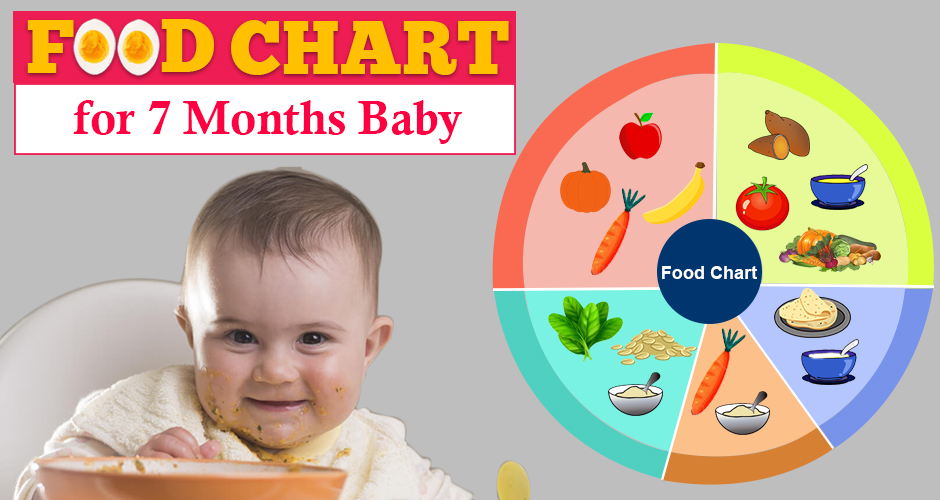 Yes, the menu must meet the requirements of the SanPin, but the norm of 1800 kcal can be obtained not through sweet buns and processed grain porridge, but thanks to legumes, oily sea fish, whole grain carbohydrates, a large number of vegetables and fruits, dairy products without sugar.
Yes, the menu must meet the requirements of the SanPin, but the norm of 1800 kcal can be obtained not through sweet buns and processed grain porridge, but thanks to legumes, oily sea fish, whole grain carbohydrates, a large number of vegetables and fruits, dairy products without sugar. This way, children will have a chance to reach the norm for fiber, omega-3 fatty acids, vegetable protein and not exceed the norm for salt and sugar.
How to help your child
Feed breakfast at home. Try to include unsaturated fats, such as nuts and seeds, and whole grain carbohydrates: rye flour and second grade bread, cereals with a shell, vegetables and fruits. A quick and healthy option is a smoothie with oatmeal, nuts, fruit, and a sugar-free fermented milk drink.
Teach your child to drink water and ask for it when he is thirsty. The current sanpin provides for the mandatory availability of drinking water in any kindergarten, so the child should always have a choice whether to drink sweet compote or a glass of water.
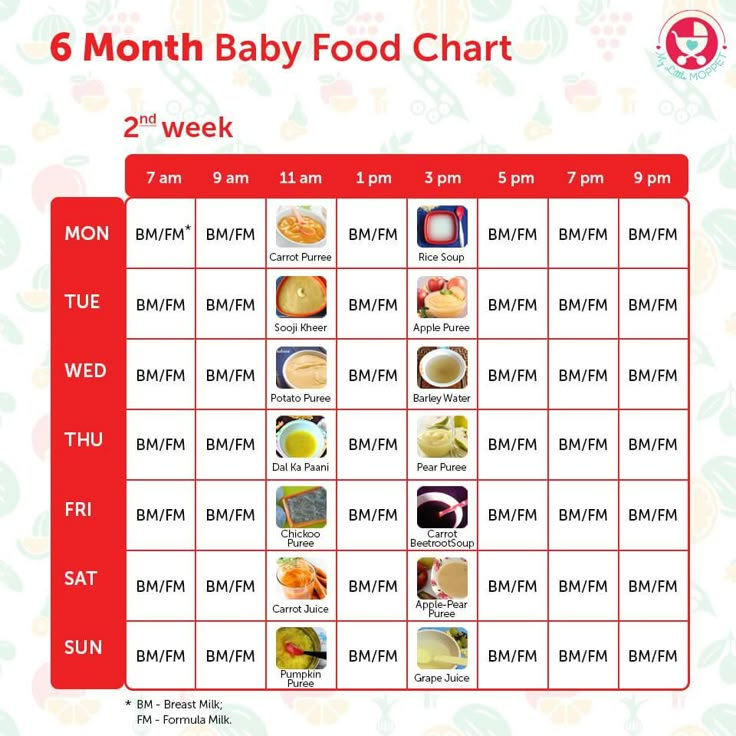 Separately, you can ask the teacher not to specifically remind about compote, but to put a glass of water.
Separately, you can ask the teacher not to specifically remind about compote, but to put a glass of water. Bring your own food. This item is especially relevant for children with special diets or medical nutrition. It is possible that you will be able to get a certificate from the pediatrician about the need to eat less sugar and more vegetables. To accept a child with their own lunch box, the kindergarten must have a refrigerator and a microwave. If there is no technology, then talk with the teacher so that the child is not forced to eat up if he does not want to.
Teach your child to make healthy choices. The family plays a decisive role in shaping the child's eating habits: children are more likely to eat vegetables and fruits if they see that their parents themselves choose such food. After the kindergarten, the child often has dinner at home, so it’s better to offer him something that he didn’t get in the kindergarten: cutting fresh vegetables, broccoli or cabbage salad, fish, legumes and other foods that are more healthy than sweet semolina.


